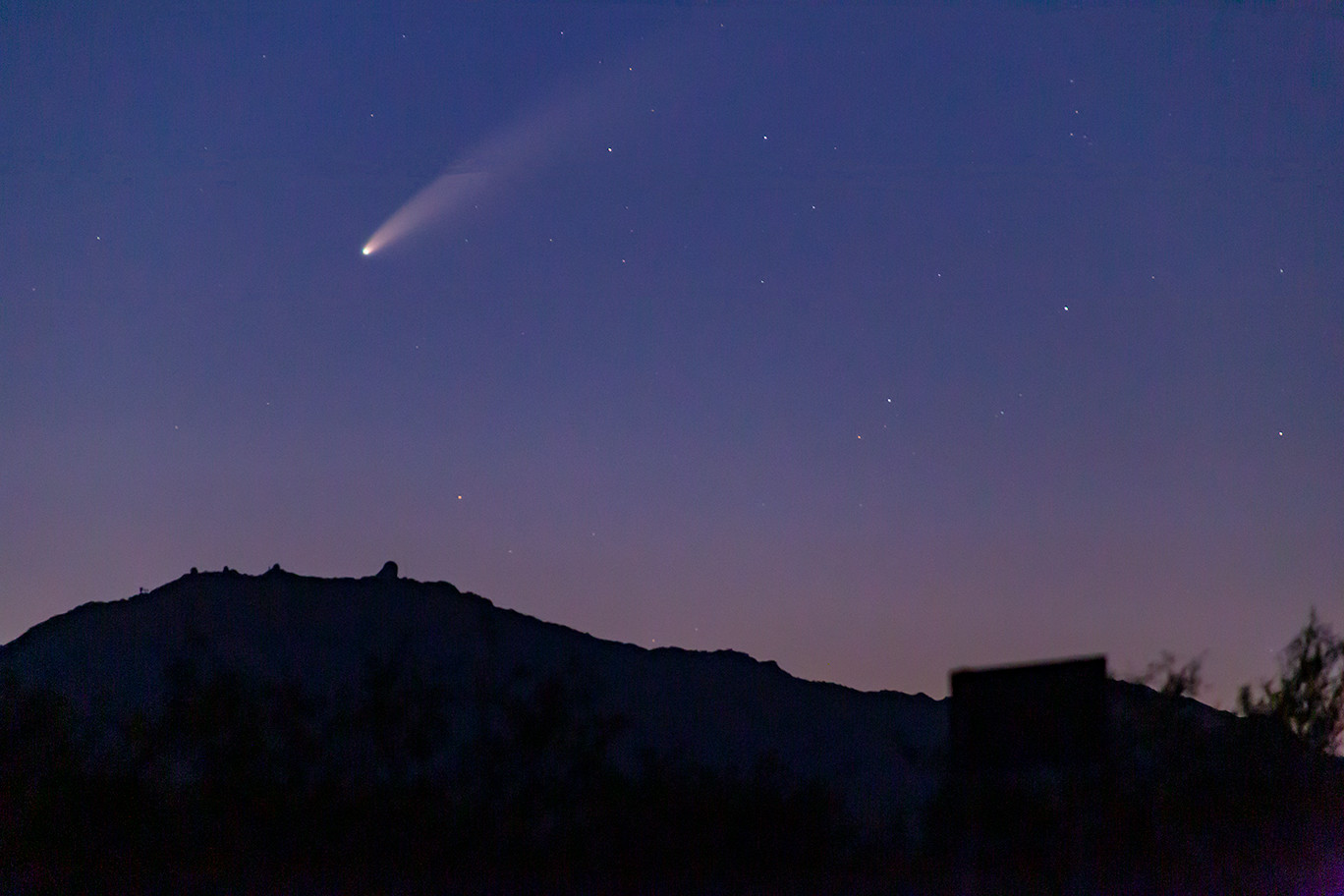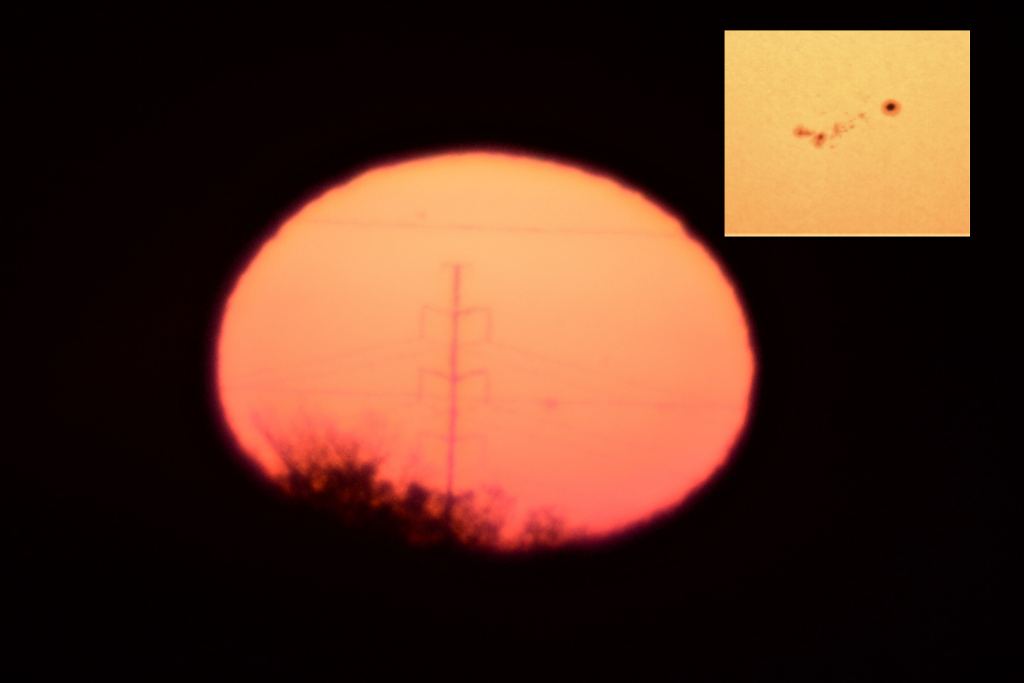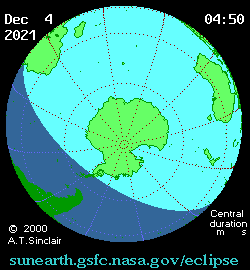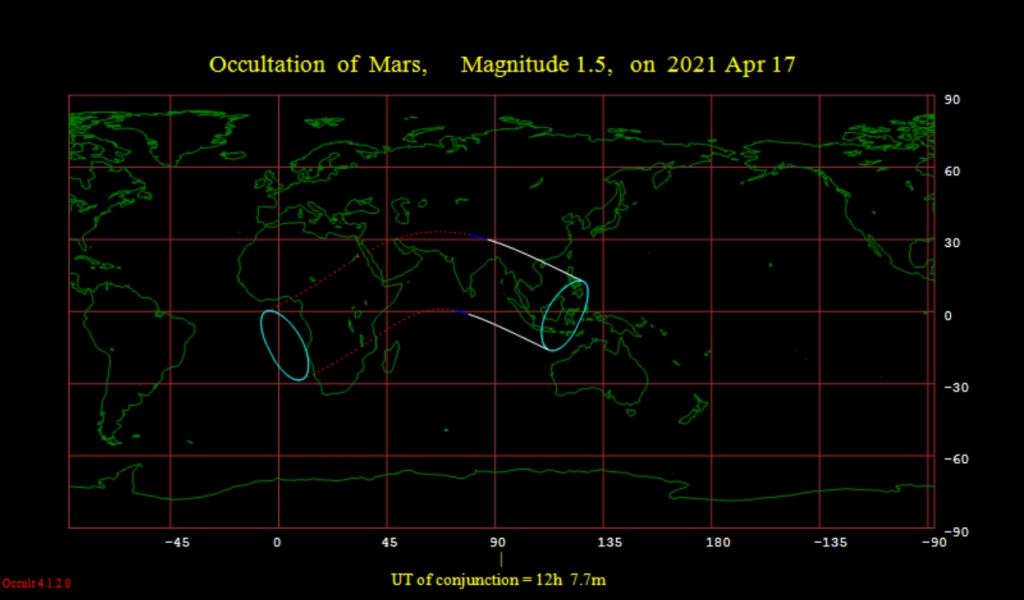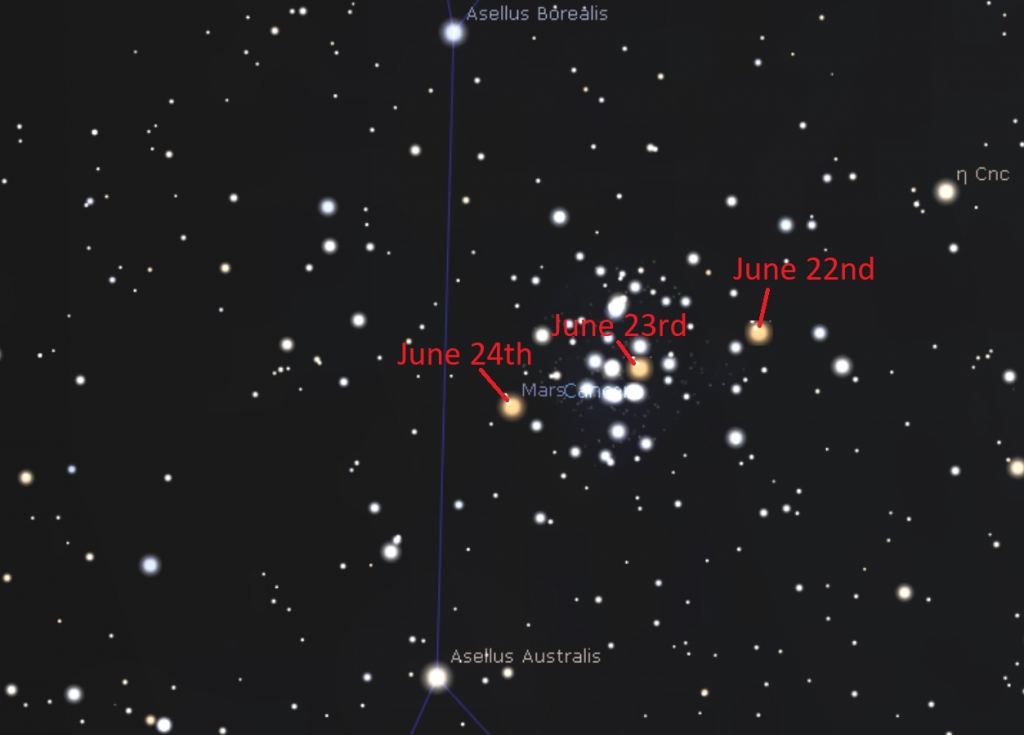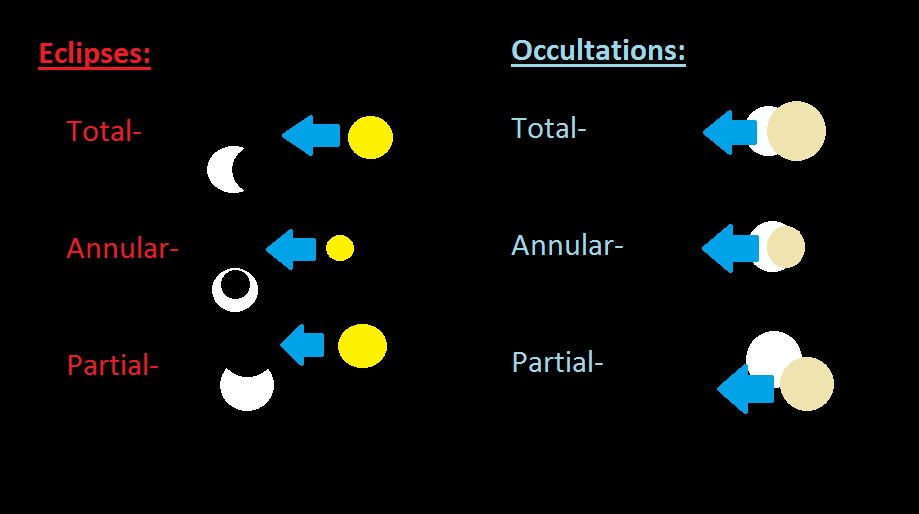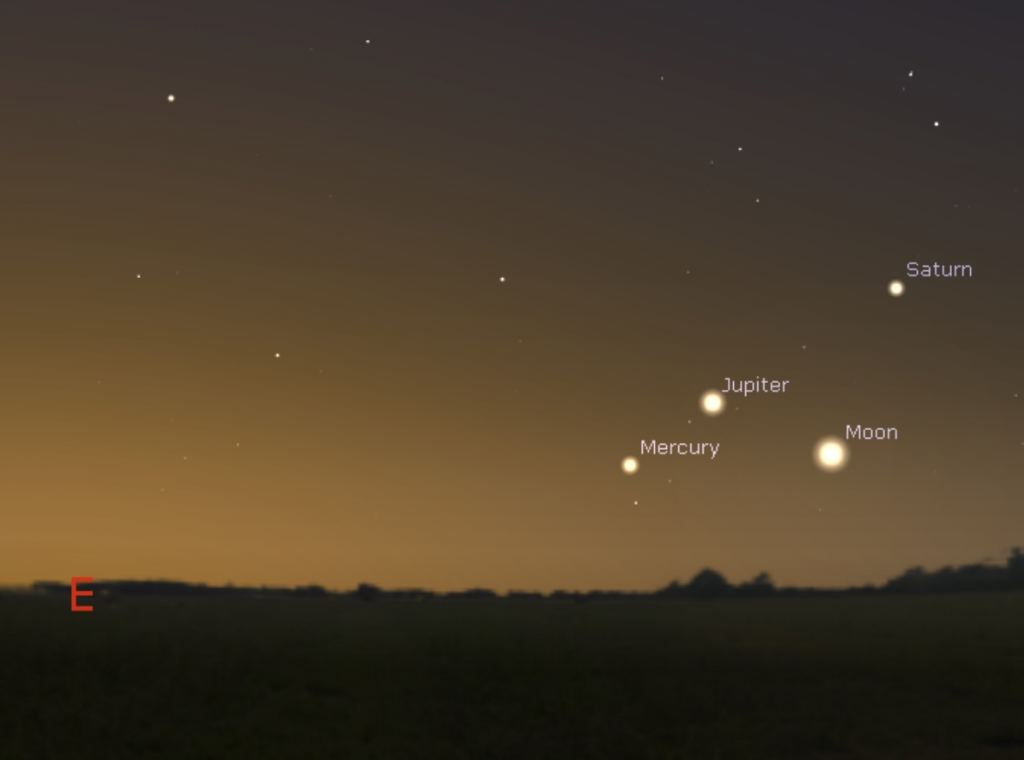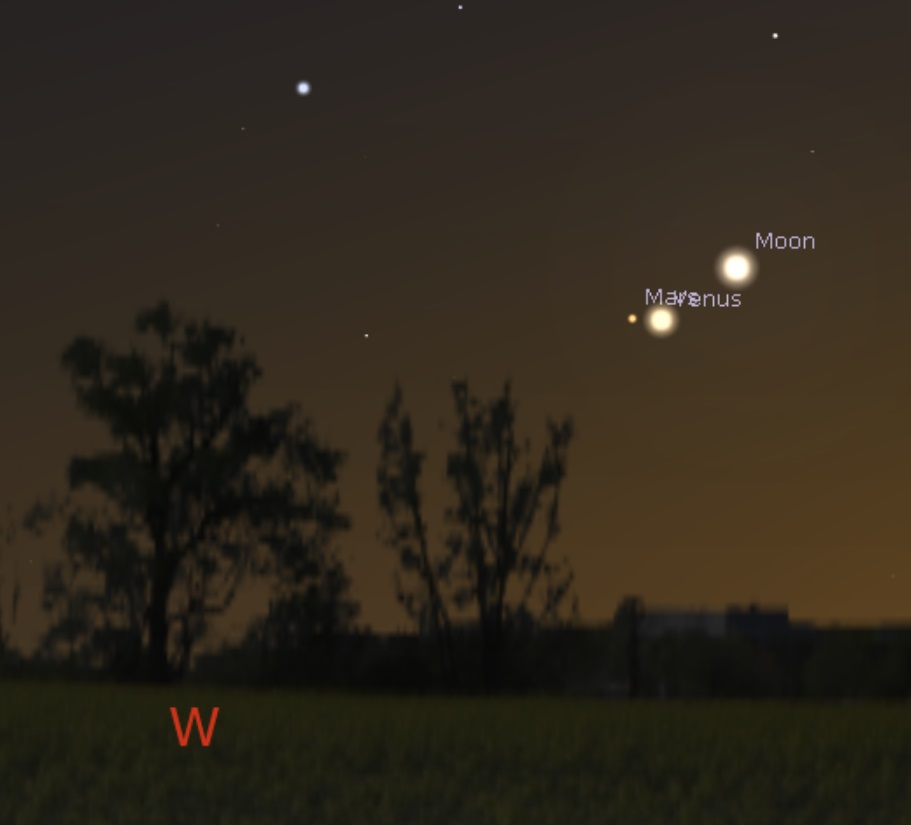Eclipses, meteor showers, occultations and more in store for the next year of astronomy 2021.
Ready for another exciting year of skywatching? 2020 produced several memorable astronomical events, including a surprise naked eye comet C/2020 F3 NEOWISE, the sure-fire Geminid meteors, and a fine, once in a lifetime close pairing of Jupiter and Saturn rounding out the year.
The Sun also awoke from its slumber, as Solar Cycle #25 (finally) got underway in earnest, with the last half of 2020 producing some of the most massive sunspots of recent years. Expect more of the same in 2021, along with increased aurora activity, as we head towards the peak of the 11-year solar maximum in mid-2025.
Top 10 Astronomical Events for 2021
First, here is a distilled list featuring the very the 'best of the best' events for the coming year, in chronological order:
Starting in January: mutual eclipse season for Jupiter's moons.
April 17th: An occultation of Mars by the Moon.
May 26th: A total lunar eclipse.
June 10th: An annular solar eclipse.
June 23rd: Mars crosses the Beehive cluster (M44).
August 12th: The Perseid meteors peak.
August 18th: A close conjunction of Mars and Mercury.
October 10th: Taurid fireball season peaks.
November 19th: A partial lunar eclipse.
December 4th: A total solar eclipse.
So what can you look forward to in 2021? Here's our annual look at top skywatching events, coming to a sky near you:
Eclipse Action in 2021
2021 contains the minimum number of eclipses that can occur in a calendar year with four: two solar and two lunar.
Lunar eclipses include: A total lunar eclipse on May 26th, with a maximum duration 15 minutes centered on the Pacific Rim region, and a deep (97% umbral) partial lunar eclipse on November 19 th, favoring the Americas, Northern Europe, Eastern Asia, Australia and the Pacific.
Solar eclipses in 2021 include: an annular solar eclipse on June 10 th, with a maximum duration of 3 minutes and 51 seconds crossing the Arctic, and a total solar eclipse on December 4th, with a maximum duration for totality of 1 minute and 54 seconds crossing the Antarctic.
The Sun and Moon in 2021
Either equinox marks the peak of aurora season, as well as the span of geostationary satellite eclipse and flare season, as distant satellites reach full illumination shortly before and after passing into and out of the Earth's shadow. Equinox season is also a great time to spy the elusive zodiacal light at dawn or dusk. In contrast, the solstices mark a period near which the International Space Station enters a span of full illumination, with June favoring the northern hemisphere for multiple sightings in one night, and December favoring the southern.
Here are those seasonal start dates for 2021:
January 2nd: Earth is at perihelion
March 20 th: northward equinox
June 21 st : northward solstice
July 5 th : Earth is at aphelion
September 22 nd: southward equinox
December 21 st: southward solstice
2021 also continues to be an 'ecliptic-like' year in terms of the Moon's path versus the ecliptic plane, as we head towards the 'hilly years' mid-decade around 2025. In 2021, the 'Supermoon' or the Full Moon nearest perigee (plus a total lunar eclipse) occurs on May 26 th, and the 'Minimoon' with Full Moon nearest apogee occurs on December 19 th. A Blue Moon also occurs on August 22 nd, in the old timey archaic sense of the 3rd in a season with 4.
Occultations in 2021
It's always fun to watch the Moon cover up a bright star or planet while it weaves its monthly flight 'round the ecliptic plane. The Moon occults three planets seven times in 2021: Mercury twice, Venus twice, and Mars three times:
April 17th: Mars versus a 26% illuminated, waxing crescent Moon for southeast Asia.
May 12th: Venus versus a 1% illuminated, thin waxing crescent Moon for the South Pacific.
November 3rd: Mercury versus a 2% illuminated waning crescent Moon for northeastern North America.
November 8th: Venus versus a 20% illuminated waxing crescent Moon for the northwestern Pacific region.
December 3rd: Mars versus a 1% illuminated waning crescent Moon, for northeast Asia.
December 4th: Mercury versus a 1% illuminated waxing crescent Moon for South Africa.
Dec ember 31 s t: Mars versus a 6% illuminated waning crescent Moon for SE Asia.
The Moon does not manage to occult a +1st magnitude star in 2021, but does visit +3.1 magnitude Mebsuta (Epsilon Geminorum), +2.6 magnitude Acrab (Beta Scorpii), +2.8 magnitude Lambda Sagittarii, and +2.1 magnitude Sigma Sagittarii in 2021.
Highlighted events for occultations of these stars in 2021 include:
Jan uary 26 th: Epsilon Geminorum for Southeast Asia (96% illuminated, waxing gibbous Moon).
Feb ruary 5 th: Beta Scorpii for India (38% illuminated, waning crescent Moon).
Apr il 3 rd: Lambda Sagittarii for Australia and Southeast Asia (60% illuminated, waning gibbous Moon).
April 28 th: Beta Scorpii for South Africa (97% illuminated, waning gibbous Moon).
May 28 th: Sigma Sagittarii for North Africa and the Middle East (94% illuminated, waning gibbous Moon).
June 24 th: Lambda Sagittarii for South Africa (99% illuminated Moon near Full).
June 25 th: Sigma Sagittarii for North America (99% illuminated Moon near Full).
July 22 nd: Sigma Sagittarii for North Africa and southwest Asia (91% illuminated, waxing gibbous Moon).
Aug ust 19 th: Sigma Sagittarii southern North America (89% illuminated, waxing gibbous Moon).
Sept ember 2 nd: Epsilon Geminorum for Europe (21% illuminated, waning crescent Moon).
Occultations: Asteroids versus Stars
Tiny asteroids can, on occasion, pass in front of distant stars, briefly revealing their shape as their 'shadow' flits across the surface of the Earth, and over any diligent observer that happens to be watching along their path. On any given year, hundreds of asteroid occultations are predicted.
In 2021, the brightest star occulted by an asteroid occurs on September 20 th, as 762 Pulcova occults a +7.1 magnitude star for Mexico and the southeastern United States.
The Planets in 2021
The dance of the planets across the sky continues in 2021. The worlds Mercury and Venus are interior to the orbit of the Earth, and always appear in the dawn or dusk sky, racing back and forth around the Sun. The very best time to catch either world is when they're near greatest elongation, or at their farthest angle versus the Sun as seen from Earth.
Greatest elongations for Mercury and Venus in 2021 are:
January 23rd: Mercury is 19 degrees east of the Sun at dusk.
March 6th: Mercury is 27 degrees west of the Sun at dawn.
May 17th: Mercury is 22 degrees east of the Sun at dusk.
July 4th: Mercury is 22 degrees west of the Sun at dawn.
September 14th: Mercury 27 degrees east of the Sun at dusk.
October 25th: Mercury is 18 degrees west of the Sun at dawn.
October 29th: Venus is 47 degrees east of the Sun at dusk.
Also, check out Venus on June 4 th, when it passes in front of the open cluster Messier 35 at dusk 18 degrees east of the Sun, and chases Mars across the Beehive Cluster (Messier 44) on July 3 rd, 26 degrees east of the Sun at dusk. Mars crosses M44 on June 23 rdinto June 24 th.
Outer planets orbiting the Sun exterior to the Earth can reach opposition, rising opposite to the setting Sun. This is the best time to observe a given planet, as it stays above the horizon the entire night. On most years, each of the outer planets can reach opposition. Only speedy Mars can skip on alternating years… and 2021 is just such a year.
March 4 th: 4 Vesta reaches opposition, at +6thmagnitude in the constellation Leo.
Jul y 17 th: Pluto reaches opposition, at +14thmagnitude in the constellation Sagittarius.
Aug ust 2 nd: Saturn reaches opposition at magnitude +0.2 in the constellation Capricornus.
Aug 20 th: Jupiter reaches opposition, at magnitude -2.9 on the Capricornus-Aquarius border.
Sep tember 14 th: Neptune reaches opposition, at +7.8 magnitude in the constellation Aquarius.
Nov ember 4 th: Uranus reaches opposition at magnitude +5.7 in the constellation Aries.
November 27 th: 1 Ceres reaches opposition at +7 magnitude in the constellation Taurus.
Mutual eclipse season for Jupiter's major moons begins in early 2021, as the four major Galilean moons pass in front of one another, casting shadows and occulting each other in their complex orbital dance. Innermost Io is actually joined by a 'faux moon' on April 2 nd, as the +5.9 magnitude star 44 Capricorni passes just 0.5" from the moon around ~6:20 EDT/10:20 UT.
Saturn's rings are tipped around 18 degrees open relative to our view in 2021 with the planet's north pole currently tipped sunward, and this tilt is narrowing towards edge-on in 2025.
The Best Conjunctions in 2021
The conjunction of Jupiter and Saturn on December 21st, 2020 was one for the ages. And hey, lots of planetary conjunctions happen every year, providing dramatic celestial pairings as the clockwork solar system turns. We say 'conjunction' when it's a twosome pairing, and 'grouping' when it's three or more.
Some of the very best celestial meet-ups to watch for in 2021 are:
F ebruary 11th: Venus-Jupiter 24' apart at dawn, 11 degrees from the Sun.
March 5 th: Mercury-Jupiter 21' apart at dawn, 27 degrees from the Sun.
March 10 th: Mercury, Jupiter, Saturn and the waning crescent Moon form a 14 degree circle at dawn, 14 degrees from the Sun.
April 25 th: Mercury-Venus are one degree apart at dusk, just seven degrees from the Sun.
May 12 th : Venus and the slim waxing crescent Moon are just one degree apart at dusk, 12 degrees from the Sun.
July 11th: Venus, Mars, and the waxing crescent Moon fit in a 3 degree circle, 29 degrees from the Sun in the dusk sky.
Jul y 30 th : Mars-Regulus are 36' apart, 23 degrees east of the Sun in the dusk sky.
Aug ust 18 th : Mercury and Mars are 4' apart, 17 degrees east of the Sun in the dusk sky. This is the best conjunction for 2021.
Comets at Perihelion
Every year, comets come and go. While most of the notable periodic comets follow well-known orbits, new comets on orbital paths measured in the thousands or millions of year may appear without warning. Will 2021 host a 'Great Comet?' No one knows for sure… but for now, here's the list of sure-fire apparitions of known comets to watch for the coming year:
May 26 th : Comet 7/P Pons-Winnecke reaches perihelion, shining at +8thmagnitude in the constellation Aquarius.
July 13 th : Comet 15P/Finlay reaches perihelion, shining at +9th magnitude in the constellation Taurus.
August 21 st : Comet 8P/Tuttle reaches perihelion, shining at +9th magnitude in the constellation Cancer.
September 17 th: Comet 6P/d'Arrest reaches perihelion, shining at +9th magnitude in Sagittarius.
November 3 rd: Comet 67/P Churyumov-Gerasimenko reaches perihelion, shining at +9th magnitude in the constellation Gemini.
Meteor S howers in 2021
2021 is an 'off year' for many major showers, including the Geminids, Leonids and the Quadrantids, owing to the interfering phase of the Moon. Your best bet in 2021 are the faithful August Perseids, with the waxing crescent Moon safely out of view:
May 6th: The Eta Aquariids peak with a Zenithal Hourly Rate (ZHR) of 50, during a 23% illuminated, waning crescent Moon.
June 7th: The daytime Arietids peak with a ZHR of 30, during a 7% illuminated, waning crescent Moon.
Aug ust 12 th: The Perseids peak with a ZHR of 100, during a 18% illuminated, waxing crescent Moon.
October 10th: The Taurids peak with a ZHR of 10, during a 22% illuminated, waxing crescent Moon (Note: the source comet 2P/Encke just reached perihelion in 2020).
Dec ember 3 rd: The Andromedids peak with a ZHR of 20, during a slim 1% illuminated, waning crescent Moon.
That's what we can look forward to in the fine year of astronomy coming up in 2021. Watch this space: we'll be writing about these events and more in the year to come.
Lead image credit: Comet C/2020 F3 NEOWISE over Kitt Peak. Image credit and copyright: Robert Sparks.
 Universe Today
Universe Today
